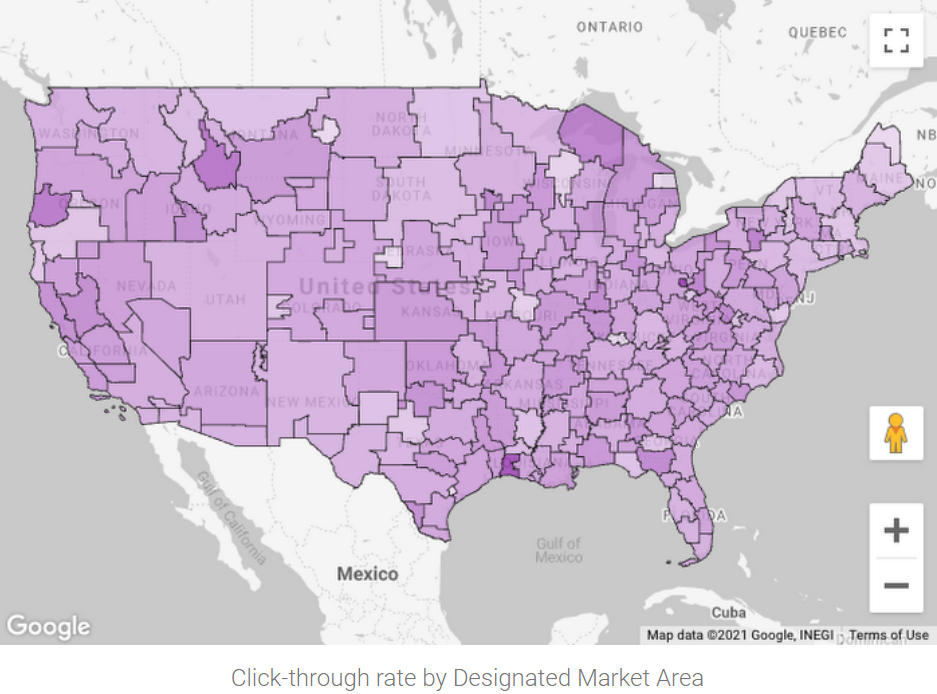Visualize geospatial data
Geospatial analytics lets you visualize geographic location data by using:
Looker Studio
Looker Studio is a no-cost, self-serve reporting and data visualization service from Google Marketing Platform that connects to BigQuery and hundreds of other data sources. The service includes support for a variety of geographic field types and choropleth maps of BigQuery GEOGRAPHY polygons. With Google Maps-based visualization, you can visualize and interact with your geographic data just as you do with Google Maps: pan around, zoom in, even pop into Street View.

For a walkthrough of geospatial analytics in Looker Studio, see Visualize BigQuery GEOGRAPHY polygons with Looker Studio.
BigQuery Geo Viz
BigQuery Geo Viz is a web tool for visualization of geospatial data in BigQuery using Google Maps APIs. You can run a SQL query and display the results on an interactive map. Flexible styling features let you analyze and explore your data.
BigQuery Geo Viz is not a fully featured geospatial analytics visualization tool. Geo Viz is a lightweight way to visualize the results of a geospatial analytics query on a map, one query at a time.
To see an example of using Geo Viz to visualize geospatial data, see Get started with geospatial analytics.
To explore Geo Viz, go to BigQuery Geo Viz web tool.
Geo Viz limitations
- Geo Viz supports geometry inputs (points, lines, and polygons) that are
retrieved as a
GEOGRAPHYcolumn. You can use BigQuery's geography functions to convert latitude and longitude toGEOGRAPHY. - The number of results that Geo Viz can display on a map is limited by browser
memory. You can lower the resolution and reduce size of geospatial data
returned from the query by using
ST_Simplifyfunction. - Real-time, interactive analysis is handled locally by your browser and is subject to your browser's capabilities.
- Geo Viz supports sharing visualizations only with users authorized to execute queries in the same BigQuery project.
- Geo Viz does not support downloading a visualization for offline editing.
Google Earth Engine
You can also visualize geospatial data using Google Earth Engine. To use Earth Engine, export your BigQuery data to Cloud Storage and then import it into Earth Engine. You can use the Earth Engine tools to visualize your data.
For more information on using Google Earth Engine, see the:
Jupyter notebooks
You can perform visualizations in Jupyter notebooks by using the GeoJSON extension. To use this extension, your geospatial data must be in GeoJSON format.
For more information, see the GeoJSON extension in GitHub.
For a tutorial on using Jupyter notebooks to visualize data, see Visualizing BigQuery data in a Jupyter notebook.
